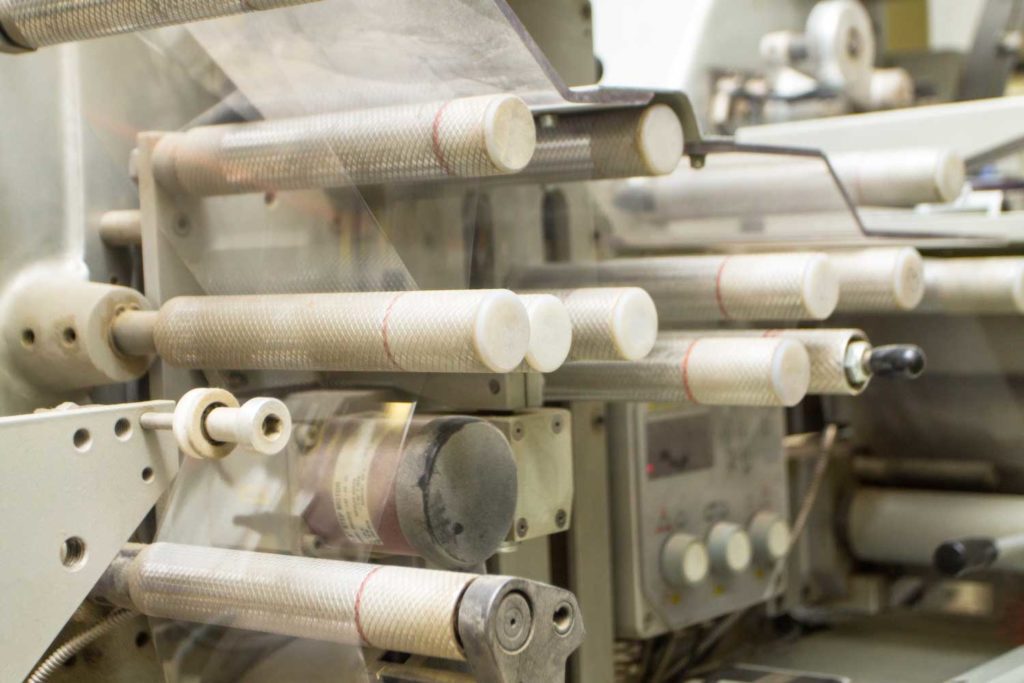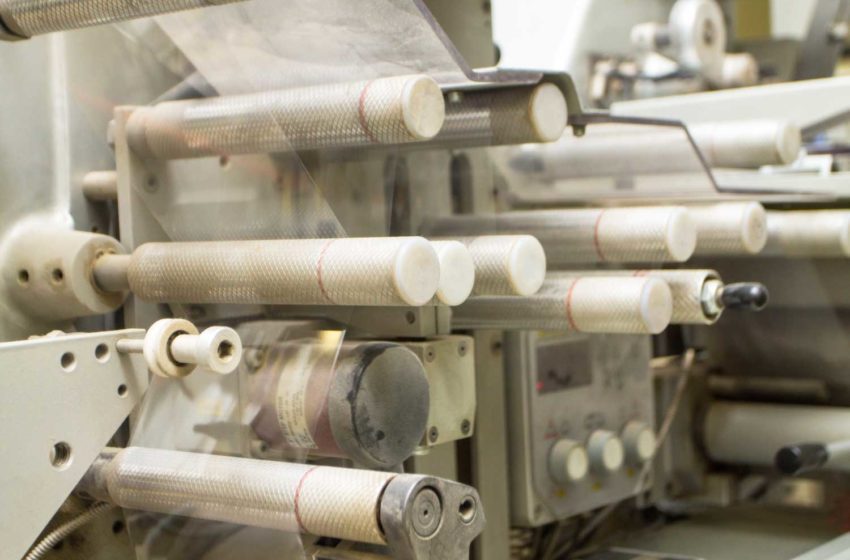
The future of tobacco machinery in a rapidly changing market for nicotine products
By George Gay
According to the Oxford Dictionary of Humorous Quotations, on June 2, 1890, the New York Journal ran what was to become one of most famous quips by Mark Twain: The report of my death was an exaggeration. The quote is perhaps more often rendered as “Reports of my death have been greatly exaggerated,” and, in this form especially, it could be applied to the tobacco industry. With the word “my” substituted with “the tobacco industry’s,” the quote could have been run in the New York Journal and other U.S. or European newspapers any time during the past 50 years because, while the tobacco industry has suffered a number of well-publicized setbacks, it has always recovered.
No one can deny, however, that while sales of traditional cigarettes might be increasing slightly in a few markets and holding firm in others, in many, they are falling or even plummeting. Certainly, the long-term, worldwide trend seems to be down, and it is difficult to imagine any future scenarios in which tobacco smoking will be given a boost.
This, of course, raises questions about where the machinery sector—and here and elsewhere in this piece I’m writing about making and packing machines for traditional cigarettes—is headed. It would seem reasonable to assume that it will decline in line with the market for cigarettes. But things might not be quite as simple as this, partly because there are divisions within this sector.
Ask around and you will no doubt be told any number of reasons why the tobacco industry has managed to survive in the face of the moral outrage aimed at its existence by the people with the power to put it out of existence, but one of the most important reasons is that it has demonstrated flexibility where necessary, though sometimes reluctantly and, therefore, belatedly.
There was, about 30 years ago, a sense that machinery suppliers, especially those based in Europe, were working themselves out of a job because, as increases in sales of cigarettes outside China slowed, machinery speeds were being ramped up—at times hugely. And at roughly the same time, technology transfer deals were being made with engineering companies in China.
In part, though, there was something of a separation between overall cigarette consumption and machine capacities. The very fastest machines became relevant mostly to what were known as long-run brands, the most internationally in-demand products, the sorts that major cigarette manufacturers wanted to focus on and wanted increasing numbers of consumers to focus on while the manufacture of lesser brands was left in the hands of slower—though mostly not slow—machinery.
On the surface, such a separation was based on the competing claims about machine flexibility. Those supplying slower machinery claimed their equipment was better for manufacturing other than long-run brands because technicians could make the size and other changes needed when switching from the manufacture of one type of cigarette to another more quickly than was the case with faster machinery. And even if changes took the same length of time on the two types of machines, they said, it was more inefficient to have a fast machine sitting idle while lengthy changes were made to it than to have a slower one sitting idle.
Partly in response to this, perhaps, the suppliers of the fastest machinery made well-publicized efforts to make their equipment more flexible. But this response was more likely to have been caused mostly by competitive issues, supplier to supplier, I think. After all, those that supplied the faster machines offered also slower—though not the slowest—equipment, either directly or, as time went by, through acquired specialized suppliers.
Of course, there is more to the machinery capacity arguments than cigarette production numbers; it also concerns investment costs. For many years now, we have been used to seeing the major international cigarette manufacturers swallow smaller companies, and, in recent times, seeing those manufacturers consolidate their product portfolios, all of which, I guess, has tipped the scales toward high-capacity machinery.
New-Generation Products
But what about the future? I guess it is not beyond the bounds of possibility that, having perhaps taken their eyes off the traditional cigarette ball somewhat, the major cigarette manufacturers have left the door open to startups, at least in those countries where it is possible to start a cigarette manufacturing business from scratch. After all, they have stopped manufacturing some of their shorter run brands and are in the process of converting former cigarette factories to manufacture new-generation products. Clearly, if this door is left ajar, part of the focus might start to switch to smaller manufacturers and, therefore, to lower capacity machinery, including secondhand machinery.
Such thoughts were brought to the surface again recently when, according to a report in the Guardian newspaper, Philip Morris International’s CEO, Jacek Olczak, called on the U.K. government to ban cigarettes within the next 10 years. Olczak apparently said PMI could “see the world without cigarettes … and actually, the sooner it happens, the better for everyone.” Olczak said, “Give [people] a choice of smoke-free alternatives … with the right regulation and information, it can happen 10 years from now in some countries. You can solve the problem once and forever.”
I don’t know why Olczak picked on the U.K., but it might have been partly because the country has already seen a fairly dramatic fall in cigarette consumption, because it has taken a generally progressive attitude toward lower risk alternatives to combustible cigarettes and because the country is in a state of transition in respect of tobacco and nicotine as it reviews its tobacco and related products regulations after having left the EU and left behind the necessity to comply with that institution’s Tobacco Products Directive (TPD).
Looked at like this, the U.K. could become an experiment in tobacco harm reduction (THR), were the government to make such a bold move. And this is not altogether unthinkable even for a semi-detached libertarian regime as is now in power. But the real question is: What would be the conclusion of such an experiment? Would the U.K. become, as those supporting the principles of THR might have it, a tobacco smoke-free heaven in which former smokers were satisfied with the new, less risky nicotine-delivery products, cancer rates plummeted and the economy boomed as improvements in health, productivity and social cohesion provided huge dividends?
Or would it conclude, as those opposed to THR might have it, with a nation, most of whose youngsters were hooked on nicotine and committing crimes to obtain the money necessary to buy the black market cigarettes onto which they had moved during their summer breaks abroad—a nation with worsening health, productivity and social cohesion?
Given scenario one, the medium-term to long-term outlook for cigarette machinery suppliers would be bleak because even the best efforts of the World Health Organization and its allies would not be able to hold the tide of countries wanting to take advantage of similar THR dividends. But given scenario two, cigarette machinery suppliers could end up on a roll given that what had appeared to be the only truly viable route out of smoking had been shown to be fatally flawed.
Of course, it is unlikely, I think, that Olczak believes the U.K. government would ban cigarette smoking within 10 years, but I wouldn’t rule out that he is banking on his plan B being taken seriously: “Give [people] a choice of smoke-free alternatives … with the right regulation and information …”
This would, of itself, be a valuable experiment, especially if cigarette smokers were also provided with the right, or rather truthful, information and if the information provided to both smokers and vapers included accurate information about the environmental impacts of traditional cigarettes and lower risk products. After all, it is going to be challenging to enjoy a smoke or a vape if your house has been blown away and you are standing up to your neck in water that is being evaporated by the heat dome that has appeared overhead.
So what is the likely outcome? I think we will see a U.K. scenario that sits somewhere between one and two above. The art of politics is compromise, which, depending on your point of view, means satisfying everybody or nobody. In other words, there will be significant but modest changes in the U.K. that will bring about a welcome boost to the conversion of smokers to less risky products.
Looking further afield, the U.K. example might have some effect on those countries orbiting at the greatest distance from the WHO, while those in closer orbits will continue to try to rebut the ideas of THR. The result will be that cigarette smoking worldwide will continue to fall for the next 10 years, much as it has in the past, and the requirement for cigarette machinery will fall with it, perhaps with demand tilting toward medium-speed equipment. I think there is simply too much inertia in the market, largely held in place by the opposition to THR inherent in positions taken up by the WHO and its allies, for there to be any sudden, major changes. For one thing, it has to be remembered that while the U.K. might have shaken off the shackles of the TPD, it is still tied to the WHO’s Framework Convention on Tobacco Control and the way that treaty is interpreted by the parties to it.
One last point: If the U.K. government does decide to ban cigarettes during the next 10 years, it would be consistent and fair for it to also ban alcohol. In fact, it would be hypocrisy not to do so. Alcohol consumption takes a far greater toll on U.K. society than tobacco consumption, and, with the number of smokers falling and the number of drinkers increasing, the damage caused by alcohol is only going to increase relative to that of tobacco.
Sodim’s Synergies

In communicating earlier this year about a story published in the August issue of Tobacco Reporter, Eric Favre described as synergistic the relationship between the instrument company of which he is managing director, Sodim, and Hauni, the machinery supplier. He made his remark in reply to a question about what advantages had accrued after the acquisition some years ago of Sodim by Hauni.
Favre made the point, also, that this synergy, this coordination if you like, extended to customers and potential customers. There were, for example, advantages to be had for a customer in acquiring, for instance, a cigarette maker and a quality control (QC) test station as a single package—advantages such as those to do with technology and logistics. And by the same token, Favre added, during an R&D project, a customer could take advantage not only of the machinery expertise and support available from Hauni but also of the quality assurance (QA) and QC oversight of Sodim.
The idea of such synergies did not make it into the August story but, this, the September issue, provides an opportunity to take the idea further because it is looking at making and packing.
Tobacco Reporter: Given that Hauni making machinery would, in the normal course of things, be delivered with QA/QC equipment included, what, specifically, can Sodim add to a cigarette manufacturer’s standards armory?
Eric Favre: Sodim adds the capacity of automatic sampling, a hands-free system that picks a cigarette from the mass flow and delivers it into the hopper of a Sodim test station: a SodiQube or a station from the Sodiline family. The data generated by the test station is then fed back to the maker, which, where necessary, uses it automatically to adjust its settings and thereby keep each cigarette produced very close to the target weight, diameter and dense end position. It is, in fact, a “police camera” that fine tunes the monitoring of the maker.
What can Sodim offer in the way of additional QA and QC equipment in respect of cigarette packing?
In the packing area, Sodim can offer a nondestructive pack seal tester that has the advantage of allowing all boxes that are correctly sealed to be returned to the product flow. Currently, this system is manual, and it would be ideal if it were developed so that it sampled automatically. Such automatic sampling would require complex developments, however, and might not be viable economically.
In respect of making and packing, what can Sodim offer to manufacturers of other tobacco and nicotine products, such as tobacco-heated products (THP) and snus?
Sodim test stations are suitable for measuring THP weights and diameters, though not dense-end positions. And the nondestructive pack-seal tester is suitable for testing THP and snus packs.
Are Sodim’s instruments used mainly by major manufacturers, or do smaller manufacturers also use them?
Sodim equipment is used by any type or size of manufacturer, from small and family-owned businesses to international groups.
Is it true to say there are certain measurements, such as those that have to do with complying with regulations, that all manufacturers must make, though these will differ from country to country, while others are optional because they provide data for internal use, perhaps for improving efficiencies and reducing waste, etc.?
This is correct. In the case of traditional cigarettes, Sodim’s very accurate and specialized equipment is needed to meet both the demands of regulations and internal standards of quality control. But for THPs, which do not generate smoke, our equipment is used more for internal QC reasons because there are fewer specific regulations in respect of these products than is the case with traditional cigarettes.
How does Sodim or a manufacturer running Sodim instruments ensure they are giving the correct readings? Do they need regular servicing and replacement after a given lifetime?
Sodim instruments will give the correct readings provided that the end users—mainly manufacturers but also laboratories—calibrate these devices regularly. And to allow users to calibrate their instruments, Sodim’s ISO 17025-accredited laboratory regularly delivers calibrated standards to the users. In addition, regular servicing is strongly advised and in most cases is carried out by Sodim at customers’ sites. –G.G.
A Veteran’s View: Challenging Times Ahead

In another main story accompanying this sidebar, I question how much longer traditional cigarettes, and therefore the machinery that makes and packs them, will be around. My conclusion is that they will be around for quite some time, even though their demise is perhaps being brought into sharper focus right now.
That is my stab at predicting the future, but what is happening right now? In an email exchange, I asked Chris Crawley of Axiom Select, who has been observing and working widely in the tobacco industry for many years, whether he believed that demand for traditional cigarette making and packing machinery was currently strong, average or weak. “I believe the market for new secondary (making and packing) machinery—with almost all the multinationals—is soft globally as traditional cigarette markets mature and volumes decline,” Crawley wrote. “If there’s a bright spot, it is probably Asia, but this, too, has its ups and downs.”
And if Asia is a bright spot, for whom is it a bright spot? Crawley pointed out that the large EU-based machinery producers were finding emerging competition in Asia where labor and materials were often lower. There was an ongoing argument that said the quality of machinery built in Asia was not as good as that built in Europe, but while those putting forward this argument might be correct in some instances, any quality gap was certainly narrowing. And, at the same time, the cost and, therefore, the machinery price gap could be considerable.
Crawley said he expected these trends to continue as mature cigarette markets slowly contracted, particularly in North America and Europe. But again, there is a bright spot. “Nevertheless, there is a highly competitive market—mostly price driven—for used/refurbished machinery from some of the larger independent cigarette producers,” said Crawley.
That is all well and good, but isn’t the competitiveness of this market in part down to the fact that supply has been choked off in recent years? “It has been general policy, with the multinational producers, not to resell or trade their surplus machinery,” Crawley acknowledged. “Nevertheless, not all play by the same rules all over the world. Consequently, there is a good amount of used machinery available if one cares to search. This trend, also, is expected to continue.”
At this point, I couldn’t help asking a question that has often occurred to me in my more fanciful moments. If I decided I wanted to start a modest cigarette manufacturing plant in the EU, what would be my best options in respect of machinery and equipment, assuming that I had a modest budget—whatever that might be—but what I thought was a winning brand name? “A modest startup can still find good used machinery at competitive prices,” said Crawley. “For example, a Molins Mk9 with a Hauni MaxS tipper is a good medium-speed complex with high efficiency/productivity. Spares and expertise are also available. And from this mid-point, you can go up or down in price and type of machinery.
“For the last 30 years, machinery development has focused on higher speed machinery, and, while there are huge benefits to achieving greater speeds from the same machinery footprint, those speed increases often come with the sacrifice of flexibility. Machinery flexibility lags profoundly and there is little development in this sector. Changing machinery configurations for different lengths, diameters and tipping, etc., remains difficult, time consuming and costly.”
Finally, Crawley turned his gaze on the future. “Affluent and highly profitable cigarette markets still abound, but they are increasingly finding their volumes shrinking and competition increasing,” he said. “In the longer term, challenging times are ahead for both machinery and cigarette producers.” –G.G.












